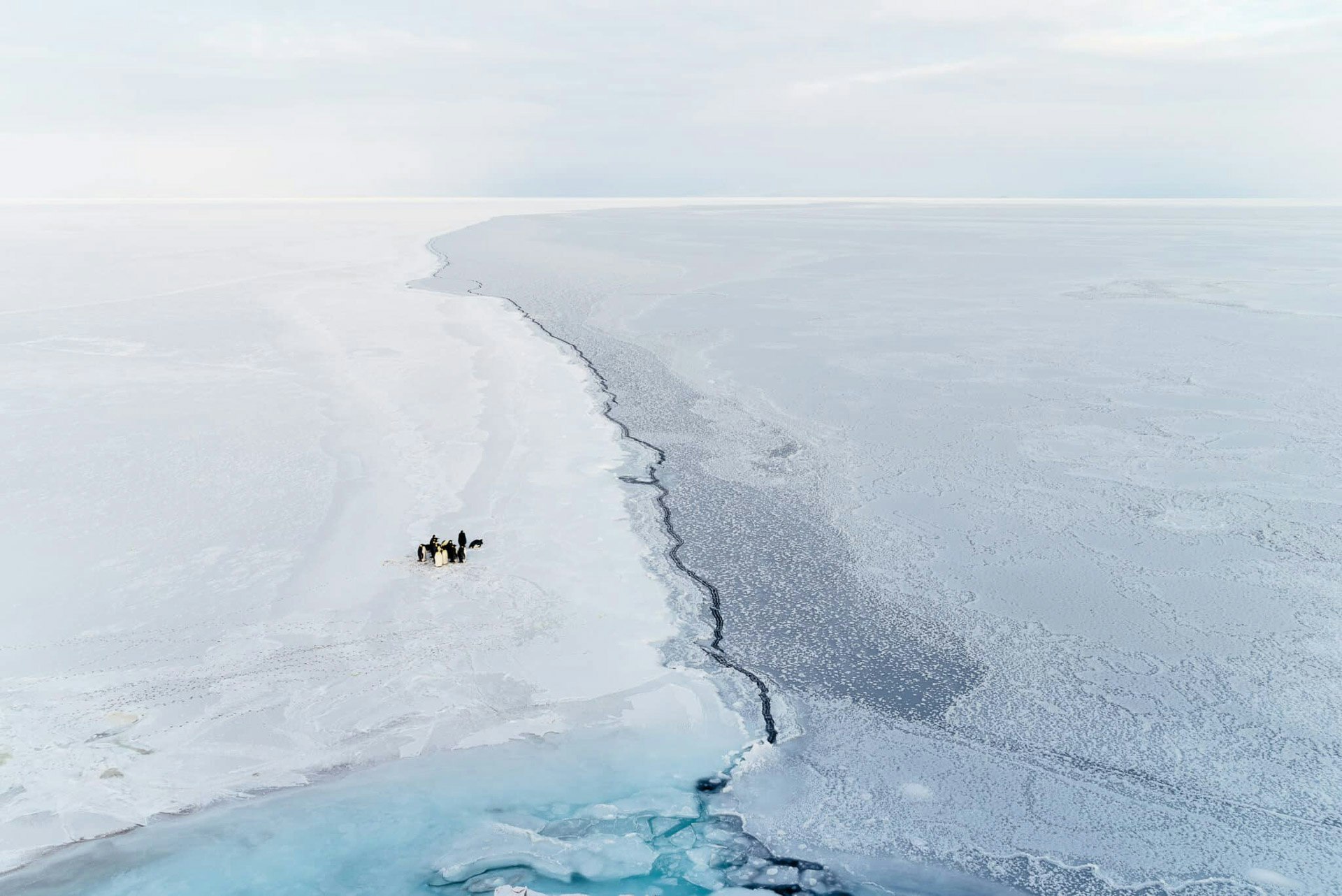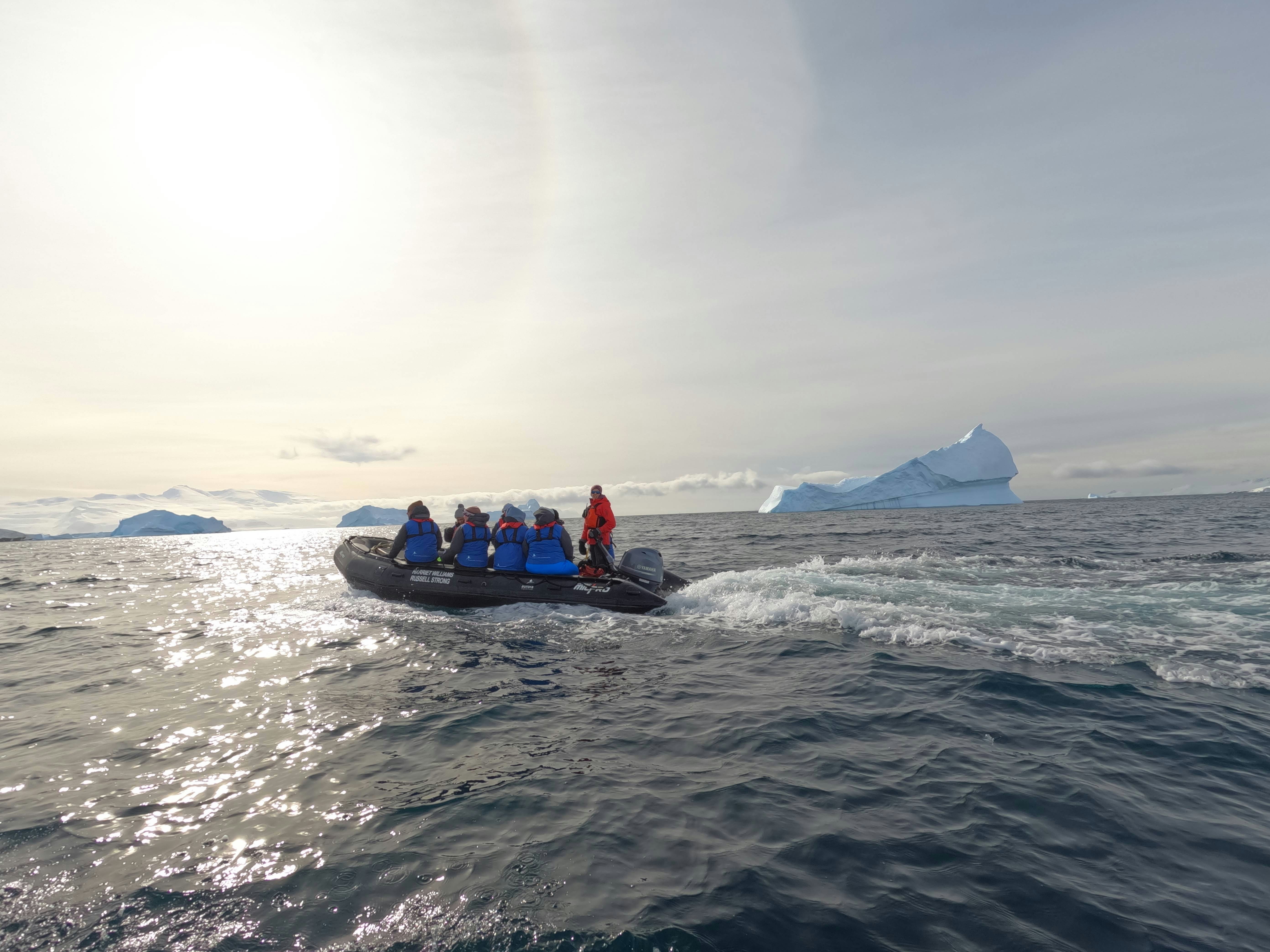No country owns Antarctica. It is governed internationally under the Antarctic Treaty, signed on December 1, 1959. This treaty ensures Antarctica is used only for peace and scientific research. Currently, 54 nations participate in this unique international partnership, making it a model of global diplomacy.
Let’s find out more about how this unique agreement has come to be known as one of the most robust, inspiring examples of global governance on Earth, setting Antarctica aside as a continent to be shared by all humankind.
How did the Antarctic Treaty start?
On December 1, 1959, twelve nations (Argentina, Australia, Belgium, Chile, France, Great Britain, Japan, New Zealand, Norway, South Africa, the United States of America and the USSR) gathered in Washington to sign the historic Antarctic Treaty.
It was the middle of the Cold War, a time of global turbulence and instability. But the question of who owns Antarctica had been a source of international conflict for decades.
Countries that claimed Antarctica
Not long after humans first laid eyes on the continent in 1820, nations began making claims to different parts of Antarctica. By 1959 there were seven individual claims, with Argentina, Australia, Chile, France, New Zealand, Norway and the United Kingdom each drawing lines around their proposed territories. The map of Antarctica was carved up like a pie chart, with each nation claiming a percentage of the continent like a slice of pizza.
Some people wonder who owns most of Antarctica. Well, while nobody owns Antarctica, Australia’s claim is the largest, with a 42% share of the entire continent covering a whopping six million square kilometres.
Each nation had their reasons for making a claim: their role in early exploration, a continued presence in Antarctica, geographical proximity or geological connections. However, these unilateral claims to an uninhabited land left many noses out of joint. Tension brewed, with most nations, including the USA and the USSR, refusing to acknowledge the claims. Bitter disputes erupted between Argentina, Chile and Great Britain, whose claims on the Antarctic Peninsula overlapped.
When war came to Antarctica
Things escalated during World War II. Despite Antarctica’s remoteness, it became a focal point of the war when, in 1941, a German raider sailed into Antarctic waters. The warship hijacked eight Norwegian whaling ships, commandeering 20,000 tonnes of whale oil. Used to make explosives, whale oil was a scarce and valuable resource during the war. With war ships confirmed in Antarctic waters, rumours began circulating about German U-boats patrolling the Southern Ocean.
By the 1950s many nations harboured fears that Antarctica could be used for military purposes in the future, including nuclear weapons testing. As the Cold War drove a wedge between the world’s great powers, the mostly unexplored territory of Antarctica emerged as a source of great concern.
Turning of the tide: the International Geophysical Year
In the summer of 1957-58, scientists from twelve nations travelled to Antarctica to undertake scientific research as part of the International Geophysical Year (IGY). Putting political tensions aside they worked together, sharing data and supporting one another’s efforts on a frigid, remote continent.
Scientists from disciplines as diverse as oceanography, geomagnetism, oceanography and geology pieced together a growing understanding of the Earth as a global system. Most importantly, they discovered the critical role Antarctica plays within this system, and the importance of Antarctica for the entire planet.
The IGY was a watershed moment for Antarctica. Scientists demonstrated not only Antarctica’s importance to the Earth system as a whole, but also a possible pathway for international governance in Antarctica through the elevation of science, cooperation and collaboration.
The following year the twelve nations involved in the IGY met in Washington to broker a treaty that might enshrine these new values in law. On December 1, 1959, the Antarctic Treaty was signed.
What is the purpose of the Antarctic Treaty?
The primary purposes of the Antarctic Treaty were to promote international scientific collaboration in Antarctica, put problematic territorial disputes on ice and ban all military activity on the continent, reserving the continent for peace and science.
Under the Antarctic Treaty, scientific research and international collaboration are encouraged. A culture of trust and transparency is critical, and Antarctic Treaty nations are encouraged to inspect any research station at any time without warning.
The Antarctic Treaty also freezes all territorial claims. While the Treaty is in force, no activity can strengthen a claim, and no nation can make a new claim.
Since it was signed in 1959, the role of the Antarctic Treaty has expanded beyond the promotion of peace and science to the management and protection of the Antarctic environment. Today, the Antarctic Treaty System comprises several international agreements, including:
- The Convention on the Conservation of Antarctic Seals (CCAS)
- The Environmental Protocol to the Antarctic Treaty (also known as the Madrid Protocol)
- The Convention on the Conservation of Antarctic Marine Living Resources
Who governs Antarctica?
Antarctica is governed by a coalition of nations that have signed the Antarctic Treaty. Fifty-four nations have signed the Treaty. They can be divided into two groups:
- Consultative parties: The 29 consultative parties conduct regular scientific research in Antarctica. This gives them the right to participate in Antarctic Treaty Consultative Meetings (ATCMs) and the consensus-based decision-making process.
- Non-consultative parties: The 25 non-consultative parties have acceded to the Antarctic Treaty, which means they have signed the Treaty but don’t have active research programs in Antarctica. They can attend ATCMs and participate in discussions, but they don’t have decision-making powers.
How is Antarctica governed?
Each year, Antarctic Treaty nations meet to discuss Antarctic matters at Antarctic Treaty Consultative Meetings (ATCMs). Between 1961 and 1994, ATCMs were generally held once every two years, but since 1994 they have occurred annually.
At these meetings, all parties can participate in discussions about the management of human activity in Antarctica. All decisions are made by consensus among the consultative parties, which means that all 29 nations must agree before a change is adopted.
Prior to 2003, the Antarctic Treaty had no permanent physical presence. Today, the Secretariat of the Antarctic Treaty is headquartered in Buenos Aires, Argentina, where it supports the Antarctic Treaty System all year round. It offers administrative support to the annual ATCMs, facilitates information exchange between Antarctic Treaty nations, maintains records of the ATCM and publishes the ATCM annual report.
There are other international agreements that play a role in Antarctic governance, for example the International Maritime Organisation and the International Whaling Commission.
Why is Antarctica not a country?
What makes a continent a country? Some say it’s the presence of a government, political system or an army. Others point to sovereignty and a permanent population. Antarctica doesn’t have any of these things. Legally, Antarctica is not considered a country but a de facto condominium, which is a political territory where several sovereign states agree to share and divide power equally.
Antarctica has a transient population, but no citizens or indigenous inhabitants. You can’t become an Antarctic citizen or get an Antarctic passport. There is no Antarctic police force, army or legal system. Antarctica has no government, but it is governed by a legally binding set of international agreements.
When a decision, measure or resolution is passed at the ATCM, it is ratified (recognised) and legislated (made into laws) in each member nation. This means that although there is no Antarctic legal system, most visitors to Antarctica are subject to the Antarctic laws of their own country. In other words, when an Australian citizen visits Antarctica they remain subject to Australian law, including the measures, decisions and resolutions of the Antarctic Treaty System, which have been set out in Australian law.
Does Antarctica have a flag?
Antarctica has a flag, which was created in 2002. It features a plain white map of the Antarctic continent on a pale blue background. This simple flag was intended to capture Antarctica’s unique international governance arrangements and apolitical nature. It is often seen flying above scientific research stations across Antarctica.
Although Antarctica has only had a dedicated flag for 18 years, some nations have had flags to fly over their claimed Antarctic territories for much longer.
British Antarctic Flag
The flag of the British Antarctic Territory was adopted in 1963. The flag has a Union Jack in the top left corner, and a coat of arms in the bottom right. The coat of arms depicts a lion, symbolising Great Britain, and a penguin, symbolising Antarctica. The crest of the coat of arms is the RSS Discovery, the ship which took Robert Falcon Scott and Ernest Shackleton to Antarctica for the British National Antarctic Expedition in 1901.
Chilean Flag of Magallanes
The Chilean Flag of Magallanes, adopted in 1997, represents the Magallanes region, which includes Torres del Paine, Cape Horn, the Magellan Strait and the Antarctic territory claimed by Chile.
The flag shows a white southern cross on a deep blue background. Along the bottom is a row of golden triangles with a white border, said to symbolise the snow-capped peaks of the Andes.
The flag is popular across the Magallanes region, and must be displayed outside all private and public buildings on three separate days: September 21 (Remembrance of Magellan Strait Discovery); September 29 (Annexation of Magallanes to Chile) and October 21 (Regional Day).
Argentine Flag of Tierra Del Fuego
In 1999, the Argentine province of Tierra del Fuego adopted their own regional flag. The design is orange and blue, split diagonally by a flying albatross. The southern cross is in the top right corner.
The region of Tierra del Fuego encompasses all nearby islands, including the Falkland~Malvinas Islands, South Georgia, the South Sandwich Islands and a sector of the Antarctic Peninsula, including the Weddell Sea. Argentina maintains its claims over the Falkland~Malvinas Islands, South Georgia and South Sandwich Islands, although they are governed by Great Britain as British Overseas Territories.
Flag of the French Southern and Antarctic Territories
The most recent addition to the register of Antarctic flags is the flag of the French Southern and Antarctic Territories, first revealed in 2007. This flag covers several tropical and subantarctic islands claimed by the French, as well as Adélie Land in Antarctica.
Does Antarctica have a president?
Antarctica does not have a president or prime minister. The Antarctic Treaty is a decentralised system of governance, with no executive leader.
Into the future
Since it was first signed in 1959, the Antarctic Treaty has grown and evolved alongside burgeoning industries such as Antarctic toothfish and krill fisheries, and tourism.
As the impacts of climate change begin to be felt in Antarctica, a commitment to continued negotiation, compromise and diplomacy in good faith are critical to ensure that the Antarctic Treaty remains an extraordinary model of international cooperation and governance in the decades to come.
 | Words by Nina Gallo, Aurora Expeditions' historian and certified PTGA polar guide. Nina has been drawn to the polar regions since her first otherworldly experience of the midnight sun in 2002. She has spent time in far northern Canada, the Himalayas, the Alps and deserts in America and Australia, always seeking out quiet, wild corners to explore. Nina feels immensely privileged to travel to these places and shares her passions for the natural world, human stories and adventure with all the wonderful people she meets. Nina is the author of Antarctica, published by Australian Geographic in September 2020. |
Inspired to Join your Own Expedition?
If you're interested in learning more about Antarctica or seeing for yourself what it's all about, contact our expedition experts or your preferred travel advisor today.






















